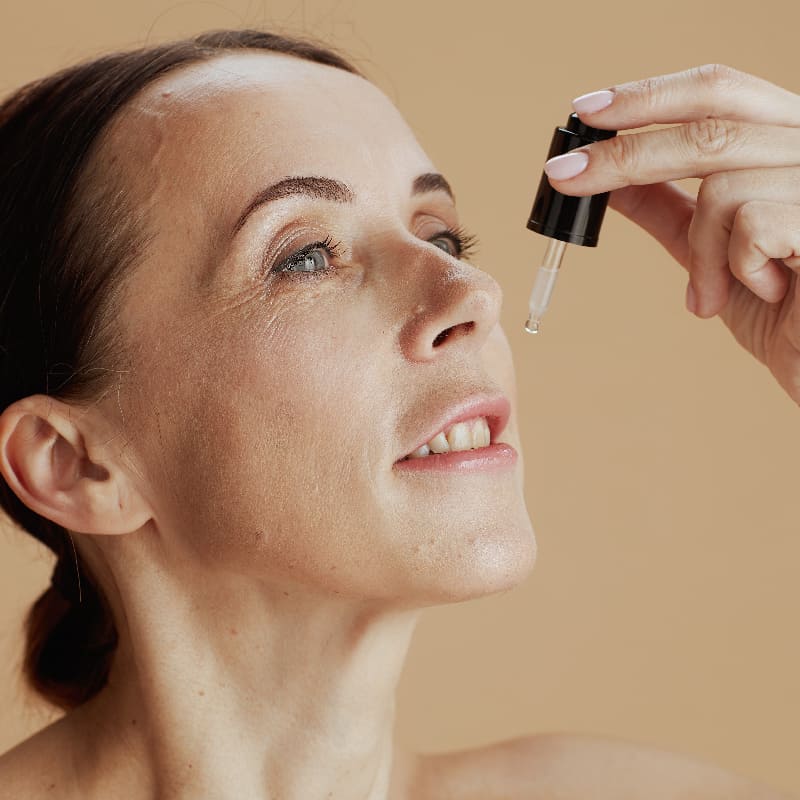This Dr. Axe content is medically reviewed or fact checked to ensure factually accurate information.
With strict editorial sourcing guidelines, we only link to academic research institutions, reputable media sites and, when research is available, medically peer-reviewed studies. Note that the numbers in parentheses (1, 2, etc.) are clickable links to these studies.
The information in our articles is NOT intended to replace a one-on-one relationship with a qualified health care professional and is not intended as medical advice.
This article is based on scientific evidence, written by experts and fact checked by our trained editorial staff. Note that the numbers in parentheses (1, 2, etc.) are clickable links to medically peer-reviewed studies.
Our team includes licensed nutritionists and dietitians, certified health education specialists, as well as certified strength and conditioning specialists, personal trainers and corrective exercise specialists. Our team aims to be not only thorough with its research, but also objective and unbiased.
The information in our articles is NOT intended to replace a one-on-one relationship with a qualified health care professional and is not intended as medical advice.
Bacterial Vaginosis Symptoms & 6 Natural Treatments
August 14, 2018

If you’ve ever dealt with bacterial vaginosis symptoms in the past, you’re far from alone. Research shows that about one in every five women will experience this type of infection by the time she reaches her mid-40.
According to a study called the National Health and Nutrition Examination Survey (NHANES), an estimated 21.2 million women between the ages of 15–49 years old living in the U.S. tested positive for bacterial vaginosis infection at one point during the three-year period of the study. That’s almost 30 percent of the total female American population in this age group. (1) A high percentage of women who tested positive for vaginosis didn’t notice any bacterial vaginosis symptoms or signs at all. But, others dealt with vaginosis symptoms like unusual discharge, burning or painful sensations, and vaginal odor.
Why is bacterial vaginosis (also called BV) so common? Risk factors for vaginal infections include sexual activity (especially with multiple partners), pregnancy, and being more susceptible to all sorts of infections or viruses due to living an unhealthy lifestyle that impairs immune function.
Below you’ll find tips for vaginal infection prevention and home treatments to help resolve bacterial vaginosis symptoms or pain. I’ve also included suggestions about making improvements to things like like your diet and stress levels in order to prevent common vaginal problems, such as yeast infections or urinary tract infections, from reoccurring.
What Is Bacterial Vaginosis?
Bacterial vaginosis (BV) is a common vaginal infection that affects young-to-middle age women most often. Women who are most susceptible to conditions affecting the reproductive organs are those who have an active sex life, impaired or weakened immune system, or women who are currently pregnant. This includes vaginosis, yeast infections or sexually transmitted diseases. (2)
Other names that vaginosis goes by include Gardnerella vaginitis and vaginal bacteriosis. What are the causes of a bacterial infection affecting the vagina? The underlying reason that BV develops is due to a disturbance of normal vaginal microflora. This includes bacteria and yeast that are present inside every woman’s body. This happens for various reasons. These include some due to abnormal responses of the immune system and changes in the pH balance of the vagina. Inside the vagina is normally slightly acidic, with a pH between 3.8–4.2. A pH higher than 4.5 is overly alkaline, which contributes to bacterial vaginosis.
Surprisingly, a very high percentage of women with BV do not report having any bacterial vaginosis symptoms. This is true of up to 84 percent of all women afflicted, according to some studies. Because bacterial vaginosis symptoms to be mild or even non-existent, most women with BV are unaware that they have an infection. So, they don’t seek treatment. Others might have some symptoms, but feel embarrassed to get help. Or, they might be confused about the cause of their uncomfortable symptoms. For example, they might assume that symptoms are due to a yeast infection that will go away on its own.
Unfortunately, even though the infection might not cause discomfort or pain for many women, having BV that remains untreated puts a woman at an increased risk of acquiring other problems that affect the reproductive organs and immune system. These include: various sexually transmitted diseases (including HIV), other types of infections, and potentially complications during pregnancy or delivery. (3)













Causes
Overgrowth of certain microbes or an imbalance of bacteria usually causes vaginal infections or diseases. Depending on the kind of infection, this can lead to changes in vaginal discharge, more discharge than normal, unusual smells, itching and pain when urinating.
The main culprit of bacterial vaginosis is Gardnerella vaginalis. This is a type of tiny coccobacilli spore that can reproduce inside in the vagina and changing the normal pH (alkaline/acidic) balance. Disruption of the genital microflora that results from overgrowth of bacteria leads to higher than usual acidity in the vaginal pH. Not every vaginosis infection is due to overgrowth of Gardnerella. Less often, other bacteria can cause infection too.
Is the infection a sexually transmitted disease or contagious, you might be wondering? Bacterial vaginosis can spread between female sexual partners but generally cannot be passed from females to males. Because of this, men are not treated for the infection as a precautionary step if their partner has vaginosis. However, avoiding sex is recommended during an infection and immediately after for a few days.
Risk Factors
Bacterial Vaginosis Symptoms
How do you know if you have a bacterial infection?
The most common signs and symptoms of vaginal bacterial infections include:
Conventional Treatment
Can BV clear up on its own? If not, how should it be treated?
As mentioned earlier, many women with BV remain unaware of the infection because its asymptomatic. If symptoms do appear, and you visit your doctor for a diagnosis or treatment, he or she is likely to ask you about your symptoms (vaginal discharge, foul-smelling odor, and pain when urinating for example) along with performing a swab test on the vagina, urine test and blood test.
Some doctors choose to make a diagnosis by performing an amine whiff test, testing discharge, or looking at the discharge under a microscope. Your doctor might use a pH test of your vaginal discharge to identify low acidity (pH greater than 4.5), which suggests vaginosis infection. (5) The doctor can do a whiff test to check for unusual vaginal odor, which suggests that Gardnerella overgrowth is the cause of infection.
Vaginal infections often cause similar symptoms, such as creamy vaginal discharge, burning sensations, itching, redness or signs of irritation. One difference between Gardnerella and other types of microbes that can overgrow in the vagina — including Candida albicans, which is responsible for some vaginal yeast infections, or Trichomonas vaginalis, which is responsible for trichomoniasis, a sexually transmitted disease — is that Gardnerella usually causes a “fishy” odor. It’s important to differentiate between different types of vaginal infections because this is key to treating the infection properly.
Once diagnosed, doctors typically treat BV in some of the following ways:
Natural Treatments
1. Avoid Harsh Soaps & Products Near Your Genitals
Washing the vagina with commercial (usually alkaline) soaps can cause worsened skin irritation, imbalances in pH and microflora, and increased vaginal discharge. It’s best to avoid using any feminine deodorant sprays, perfumed or dyed products near your vagina (such as lubricants or scented tampons/pads), especially on the inside or if you have any type of irritation already.
It might sound strange, but most dermatologists and experts recommend that you give the irritated genital area a rest for several days and avoid using soap all together. For several days, try cleansing your vagina with warm water only (no soap), plus changing to a mild laundry detergent. After that use natural, mild, non-deodorant soaps and don’t overwash the vagina (more than once daily), as it is naturally “self cleaning,” especially inside. Also, try not to use strong detergents with perfumes and other chemicals to wash your underwear, since this can rub off on your skin and irritate your genitals. To prevent future irritation or infection, it’s best to wash the outside of the vagina (vulva) only once daily with unscented glycerin or castile soap, while monitoring your symptoms.
While showering, some women have found relief from yeast infection or bacterial vaginosis using some of the following natural/home remedies. Use caution when trying any home remedy, and if you notice symptoms getting worse, mention this to your doctor:
2. Don’t Douche!
Douching is a major risk factor for vaginal infections, as it disrupts the normal bacterial balance inside in the vagina. Douching won’t help get rid of an infection. It can actually make the infection worse by removing beneficial bacteria that are there that protect you. (7)
3. Upgrade Your Tampons
During menstruation, try using organic/natural cotton tampons, being sure to change them often enough. I recommend unscented tampons or pads that don’t contain any harsh chemicals, dyes or perfumes. Avoid bacterial overgrowth by changing tampons at least three times daily (at least every six to eight hours). You can also use pads/panty liners (such as overnight, which limits the hours you use the same tampon). (8)
4. Avoid Intercourse During an Infection, Then Use Condoms
It’s always wise to use a condom during sex if you’re with a new partner, in addition to limiting the number of sex partners you have in general. The more partners someone has during their lifetime, the more likely they are to acquire infections or an STD. This is especially true when the sex is unprotected (no condom for example), even if the woman is taking birth control pills. Remember that the pill does not protect against STDs and does not stop the transfer of bacteria!
5. Talk To Your Doctor ASAP If You’re Pregnant
Because BV can lead to complications in a developing fetus, pregnant women with bacterial vaginosis symptoms should be treated as quickly as possible. If you’re breast-feeding, talk to your doctor as well, since this will have an impact on the medication/treatments you use. Complications during pregnancy that are possible if left untreated are rare, but can include premature delivery or low birth weight.
6. Boost Immunity To Prevent Recurrent Infections
It’s common for bacterial vaginosis to recur within three to 12 months. It can recur even if the infection is initially treated. This is likely due to risk factors not being addressed. It can also be due to impaired immunity in some women, which leads to higher chance for all infections/illnesses. Tips for improving immunity against infections include:
Precautions
As with other infections, I recommend that you don’t take antibiotics unless you really need to. Experts recommend that if you do take antibiotics to treat bacterial vaginosis symptoms, you do so for the shortest duration possible (your doctor can decide this). Avoid drinking alcohol or taking other medications that might interact with antibiotics.
Keep in mind that certain vaginosis creams that you insert into your vagina (such as clindamycin cream) can dissolve latex condoms and make them break. So, it’s best to avoid sex during treatment and for about three to four afterward as well. (10)
Pregnant and lactating women should not take antibiotics unless they are specifically cleared to do so and monitored. Antibiotics can pass on to the fetus/infant including through breast milk. If you have other symptoms such as warts, blisters, a fever, lots of pain when urinating, or unusual bleeding, then speak with your doctor for an evaluation to rule out other STDs or infections.
Final Thoughts
6 Tips for Prevention and Treatment of Bacterial Vaginosis Symptoms